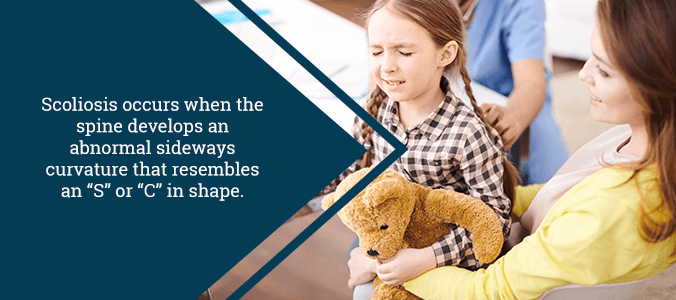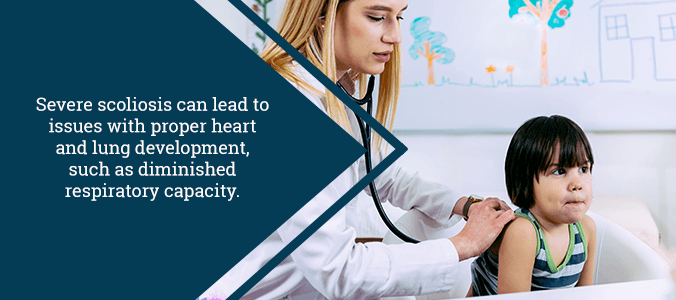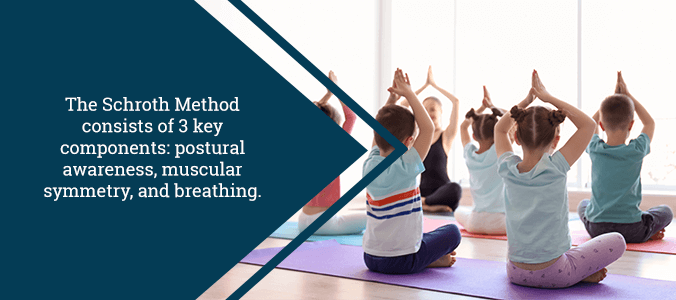Can the Schroth Method for Scoliosis Help Your Child?
Has your child been diagnosed with scoliosis? If so, then you probably want to investigate all your conservative treatment options before you consider surgery. And, luckily there are several conservative therapies available.
The Schroth Method is an approach for treating scoliosis that uses customized exercises and breathing techniques. Usually, a physical therapist or another specifically trained medical professional will prescribe this exercise regimen. In particular, parents seeking nonsurgical options for their child’s scoliosis may find the Schroth Method helpful.
So how does the Schroth Method work? Use this guide to understand childhood scoliosis, the Schroth Method, and when it can be effective.

What is Scoliosis?
Some think of the spine as a straight line that extends from the base of the neck to the pelvis. The spine, in fact, is not straight. It contains natural curves that help to distribute mechanical stress while we move or rest. These curves, resemble an “S” in shape, moving gently forward and backward in the body.
Some curves, however, are not normal. In the case of scoliosis, the curves of the spine arch sideways to the left or right. This condition usually occurs in the chest (thoracic) area. A spine with scoliosis may resemble a “C” or sometimes an “S” shape when viewed from the back of the body. In many cases, scoliosis is mild with little or no symptoms. However, more severe cases can lead to spinal deformities, back problems, uneven shoulders and hips, and even lung or heart problems.
Anyone can develop scoliosis. Most commonly, however, the condition occurs during the growth spurts of puberty. Unfortunately, the causes of pediatric scoliosis are largely unknown. Many medical professionals believe that scoliosis results from hereditary factors, birth defects, injuries, or infections of the spine.
Types of Scoliosis
- Idiopathic Scoliosis: A sideways curvature in the spine that usually arises during adolescence. This is the most common form of childhood scoliosis. The exact cause for this type is unknown. Doctors believe genetics may play a major role.
- Congenital Scoliosis: A rare condition in which the abnormal curvature develops when a child is in the womb. The curve is present at birth and usually requires surgery to correct.
- Neuromuscular Scoliosis: This type of scoliosis often develops in individuals with neuromuscular conditions like cerebral palsy or muscular dystrophy. If these individuals are confined to wheelchairs, then the spine may develop unusual curves.
Many children with mild scoliosis don’t show symptoms. Those with moderate or severe cases may experience:
- Leaning to one side
- Uneven shoulders
- Uneven waist or hips
- Different leg heights
- Muscle spasms in the back
- Changes in walking
- Reduced range of motion
- Difficulty breathing
- Pain and inflammation as back muscles become strained
Routine doctor visits and school screenings usually help with early detection. In some cases, an X-ray may be used to confirm a diagnosis. This allows the doctor to determine the Cobb angle—the lateral (sideways) curve created by scoliosis. A Cobb angle of more than 10 degrees warrants a scoliosis diagnosis.

Understanding the Schroth Method
The Schroth Method was developed by Katharina Schroth in the early part of the 20th century. She suffered from scoliosis and believed a combination of breathing techniques, postural awareness, and exercises could stop (or even correct) spinal curve progression.
After World War II, Katharina Schroth and her daughter relocated to West Germany and founded a scoliosis clinic. Throughout the 20th century, the method continued to develop and evolve thanks to research and collaboration. At this point, research has shown that Katharina Schroth’s original concept was effective in helping those with large curvatures in the thoracic area. In fact, the basic principles of the Schroth Method are still in use today.
How the Schroth Method Works
Looking at scoliosis from an X-ray is somewhat misleading. While scoliosis looks like a “C” or “S” curve on an x-ray, it is actually a complex condition involving rotation of the spine. Areas between the vertebrae may become overstretched or compressed depending on the curve. Those trained in the Schroth Method approach scoliosis from a 3-dimensional perspective.
Since every spinal curve is unique, the Schroth exercises are tailored to your child’s exact condition. This can include exercises while standing, sitting, or lying down. In addition, adaptive equipment like poles, Schroth bars, and therapy balls are used during treatment.
The Schroth Method has three key components:
- Postural Awareness: Being mindful of spine posture using mirrors or other techniques is the first step to correcting it. Those with scoliosis need to develop a heightened awareness of their posture while performing everyday activities. Poor posture only makes scoliosis worse.
- Muscular Symmetry: When the spine curves, it affects muscles in the back. One side of the back may have overworked muscles while the other side weakens. Core stability exercises, similar to pilates, can correct muscular imbalances.
- Rotational Angular Breathing: Using specialized breathing techniques, one can rotate the spine to reshape the rib cage and nearby soft tissues.
The Schroth Method requires time and dedication. It can, however, pay off. Current sessions using Schroth exercises usually last under an hour. One may see visible improvement in as little as 5 sessions. Others may require even more sessions.

Positive outcomes for the Schroth Method include:
- Better posture
- Improved breathing
- Pelvic realignment
- Better pain management
- Improved self-management of scoliosis
- Increased movement and functioning
Limitations of the Schroth Method
The Schroth Method requires commitment and repetition. Some drop out of the program because they may not witness results immediately. In addition, one’s personality or cognitive ability may prevent him or her from practicing the exercises appropriately.
Also, each case of scoliosis is different. Some may not respond positively to the Schroth Method. For example, those with a previous history of spinal procedures using screws or rods may not see any further curve correction.
Sometimes a combination of scoliosis bracing and the Schroth Method is effective. For others, the curve progression, pain, breathing problems, and decreased function need more aggressive treatments.
You may want to consult an orthopedic surgeon if your child’s Cobb angle is more than 40 degrees. Without surgery, these issues can progress through adulthood. While surgery may be a traumatic experience for adolescents, their bodies typically recover faster than adults.
Scoliosis Surgery
The goal of scoliosis surgery is to stop curve progression, reduce deformity, and maintain trunk balance. Spinal fusion surgery—using bone grafts and other instrumentation to allow the affected vertebrae to grow together as one—has a track record of positive long-term outcomes.
Sometimes, especially for younger children, using rods to anchor the spine allows for curve correction. These surgeries need to be repeated as a child grows. In addition, fusionless spine surgery is a newer approach that may allow a child to retain more flexibility as he or she matures.
Spinal surgery may seem like a scary thing, especially to children. Technological advances, however, allow an orthopedic spine surgeon to use minimally invasive techniques. Using a tiny camera and instruments, some scoliosis surgeries may only require small incisions to access the affected area. As a result, there is less pain, scarring, and quicker recovery times.
Where to Find Help for Your Child
As a parent, you want to make sure your child has the best care with a trusted surgeon. Dr. Jason E. Lowenstein has continuously been awarded for his treatment of scoliosis and other spinal deformities. Among other awards, New Jersey Family Magazine has named him a “Family Favorite” and “Favorite Kids Doc” every year since 2015.
Dr. Lowenstein knows how difficult it can be for a child suffering from scoliosis. This is why he uses a combination of conservative treatments and the latest minimally invasive advancements to make this difficult time more comfortable for your child.
Call (855) 220-5966 to meet with Dr. Lowenstein. Find how he can make a positive change in your child’s life.
